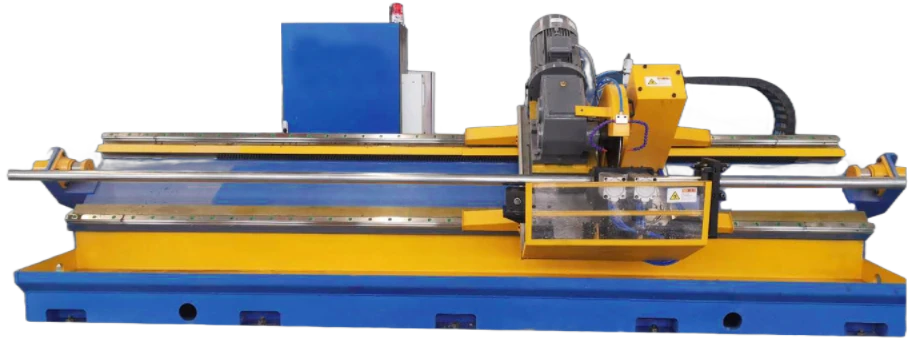Manual Wire Straightening Tool for Improved Precision and Efficiency in Metalworking Projects
The Manual Wire Straightener A Handy Tool for Precision and Quality
In many industries, from construction to crafts, the need for perfectly straightened wire is paramount. Whether you are crafting jewelry, building a fence, or engaged in electrical work, having straight wire ensures both quality and precision in your projects. One tool that has gained popularity among artisans and builders alike is the manual wire straightener. This simple yet effective device has a lot to offer users looking for efficiency and enhancement in their work processes.
What is a Manual Wire Straightener?
A manual wire straightener is a tool designed specifically to straighten bent or twisted wire. Constructed with a set of rollers or guides, it allows the user to feed the wire through, correcting any bends or irregularities. Unlike electric wire straighteners, manual versions rely on simple mechanical principles, making them portable, user-friendly, and cost-effective.
How Does It Work?
The operation of a manual wire straightener is straightforward. The wire is fed into the device, where it encounters a series of rollers that are strategically placed to apply even pressure across its length. As the user pulls the wire through the rollers, any kinks or bends are smoothed out, resulting in a perfectly straight piece. This process not only saves time and effort but also enhances the uniformity of the wire, which is necessary for various applications.
Advantages of Using a Manual Wire Straightener
1. Cost-Effective Manual wire straighteners are typically less expensive than their electric counterparts. This makes them an attractive choice for hobbyists and small businesses that may not have the budget for more complex machinery.
2. Portability Due to their lightweight and compact design, manual wire straighteners can be easily transported. This feature is particularly beneficial for professionals who work on-site, allowing them to maintain flexibility and efficiency in their workflows.
manual wire straightener

3. Ease of Use Unlike some more complex tools, manual wire straighteners require minimal training to operate. Users can quickly learn how to adjust the wire and achieve the desired results, making it accessible even for beginners.
4. Versatility Manual wire straighteners can accommodate various wire types and gauges. Whether you’re working with fine jewelry wire or heavy-duty fencing materials, there’s likely a manual straightener that suits your needs.
5. Durability Made from robust materials, manual wire straighteners are built to last. Unlike electric tools that may break down or require maintenance, a well-crafted manual wire straightener can provide years of reliable service with minimal upkeep.
Applications of Manual Wire Straighteners
Manual wire straighteners have diverse applications across different fields. In the jewelry-making industry, for instance, artisans use them to ensure that wire is free of defects before shaping it into intricate designs. In construction, straightened wire can serve as a crucial component in reinforcing concrete, ensuring structural integrity.
Moreover, manual wire straighteners are equally useful for hobbyists and DIY enthusiasts who take on various projects, from crafting to home repairs. The ability to produce straight wire can significantly improve the quality of finished products, making it a worthwhile investment for anyone involved in hands-on work.
Conclusion
The manual wire straightener is a transformative tool that caters to a broad spectrum of users, from professional artisans to casual hobbyists. With its cost-effectiveness, portability, ease of use, and versatility, it plays an essential role in ensuring quality and precision in wire manipulation. Whether you're in the business of building, crafting, or repairing, a manual wire straightener can be an invaluable addition to your toolkit. Embrace this simple yet efficient device to enhance your projects and achieve the high standards you aim for in your work.
-
High Frequency Straight Seam Welded Pipe Production Line-BzZhou Xinghua Machinery Equipment Manufacturing Co., LTD.|Precision Welding, High EfficiencyNewsJul.30,2025
-
High Frequency Straight Seam Welded Pipe Production Line|BzZhou Xinghua|Precision Welding&EfficiencyNewsJul.30,2025
-
High Frequency Straight Seam Welded Pipe Production Line - BzZhou Xinghua|Precision Engineering&EfficiencyNewsJul.30,2025
-
High-Frequency Straight Seam Welded Pipe Production Line-BzZhou Xinghua Machinery Equipment Manufacturing Co., LTD.NewsJul.30,2025
-
High-Frequency Straight Seam Welded Pipe Production Line-BzZhou Xinghua Machinery Equipment Manufacturing Co., LTD.|Precision Manufacturing, High EfficiencyNewsJul.30,2025
-
High Frequency Straight Seam Welded Pipe Production Line-BzZhou Xinghua Machinery Equipment Manufacturing Co., LTD.|Precision Steel Pipe Manufacturing&Industrial EfficiencyNewsJul.29,2025


